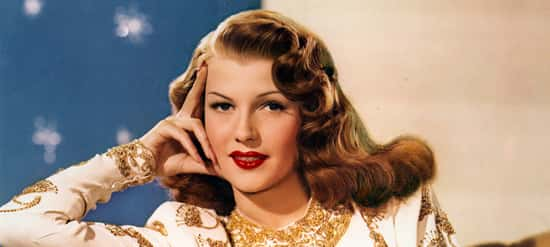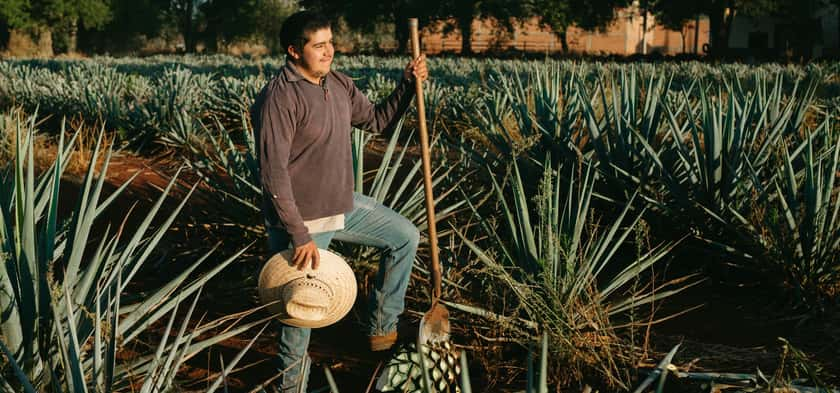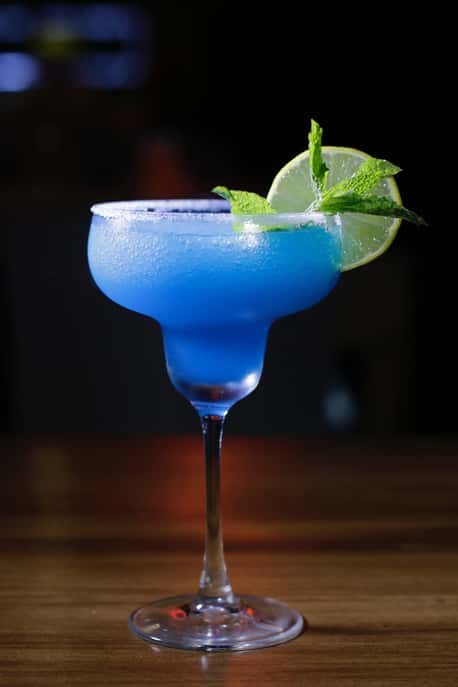The origins of the Margarita are very murky
The best Margarits boils down to the tequila used
The popularity of the Margarita soared after the invention of the Frozen Maragrita
The world’s biggest Margarita was made in Las Vegas
Hola, mi gente! Or, hello, my people! We’re feeling festive over here, so take a load off and let’s talk a bit of one of the most popular, if not THE most popular, cocktails ever made. That, my friend, is the one, the only, Margarita.
Whether you take this bad boy frozen, straight up, or on the rocks, it’s safe to say we’ve all run into one somewhere along the way.
The Margarita’s origins are a bit foggy, as with many popular drinks, but the legacy is something that is crystal clear.
When you need to turn the party up or kick your feet up and lay your head back, a Margarita is always going to be just what the doctor ordered.
There are quite a few theories that claim to drawback to the original creation of the Margarita. This is entirely understandable since, after all, who wouldn’t want to say that they were the ones to discover this brilliant concoction?
The only common denominator is that the cocktail is rooted in Mexican culture, as you won’t have a Margarita worth a damn if you don’t have the right tequila. (More on that later.)
But Let’s talk about some of the fun theories about who should be credited as the actual creator of this famous cocktail.
Theory #1: Up first is the theory that the cocktail is a remix of an original called The Daisy Cocktail. The Daisy was a drink made famous during the prohibition, which was a mix of brandy/whiskey/cognac, orange liquor, soda, grenadine, and lime/lemon juice.
Some folks would jump over the border during that period to get a decent cocktail. The bartenders in Mexico would substitute the whiskey/brandy for what they had on hand; tequila! And get this; Margarita in Spanish means Daisy.
Do what you will with that information.
Theory #2: Next up is the idea that a certain socialite from Texas, Margarita Sames, whipped up the concoction at a private party where Mr. Tommy Hilton (of Hilton Hotels) was in attendance. It was said to be such a hit at the party that Mr. Hilton added it to his list of offered cocktails at his hotel. And the rest is, as they say, history.
Spoiler: The issue with this theory is that if you check the Hilton family tree, there’s no Tommy, no Thomas, nothing close. Not even a middle name. I’m guessing this is what happens when you play ‘telephone’ with Conrad Hilton’s name.
Theory #3: In the early 1940s, the first producer and importer of tequila, Jose Cuervo, posted an advertisement that hoisted the tagline: Margarita; it’s more than just a name. This was advertised at least three years before Margarita Sames claimed to invent it at her private party.
Theory #4: Another popular theory is that in the mid-1930’s Carlos Herrara, a restaurant owner in Tijuana, Mexico, was tasked with creating a cocktail for a showgirl that was allergic to, well, everything.
With a mix of tequila, triple sec, and fresh lime, the Margarita was born. She loved it, and the bartender named the drink after the showgirl, Margarita Cansino, a.k.a Rita Hayworth.

Now, fair reader, I ask, what is the truth?! Who knows. The truth is relative. I’ll leave the final declaration of the true origins for you to decide. Still, regardless of who created it or how it came to be, the Margarita is here to stay!
We can not discuss the Margarita without talking about the most critical component of its construction; TEQUILA! You can’t make a true blue Marg without Tequila, and why would you want to?
But what kind of tequila do we use? And how much do you need to spend on the bottle? I got you, fam. Let’s break it down.
When it comes to tequila, there are various types you can purchase; Blanco, Anejo, and Reposado.
Blanco (white) with 100% blue agave is highly recommended for your standard Margarita.
Blanco tequila will be clear-colored, which means that it’s the purest expression of the distilled agave. When the tequila is Blanco, this means that it was bottled almost immediately after it was distilled, which gives it a robust agave flavor.
A favorite brand for Margaritas’ in Patron, which has a distinct herbal flavor due to the agave being traditionally pressed. A 750 ml bottle will run you about $40.
Resporado (rested) tequila means that the tequila has rested in a wooden oak barrel for at least 60 days, giving it a very mellow and smooth taste.
Anejo (aged) tequila is tequila that has been aged for at least one year. Anejo is an excellent choice for whiskey and scotch lovers.
This type of tequila has an intense and oaky taste and color similar to popular dark alcohol. A 750 ml bottle may run you around $50.
Extra Anejo (Extra aged) tequila is tequila that has been aged for up to three years. A 750 ml bottle will run you about $90.
Another place where people slip up on trying to make the best possible margarita is by not buying a tequila that is made with 100% Blue Agave. 100% agave will give you a higher quality tequila, giving you more bang for your buck and a significantly better taste.

Blue Agave is native to Jalisco, Mexico, so it’s believed that the best tequila is imported straight from Mexico.
After about taking eight years to mature, the heart of the plant is stripped, dried, pressed, and fermented to be the natural sweetener that we all enjoy.
It’s no secret that the Margarita has left a lasting mark in pop culture. From films, television, advertisements, and music, this cocktail is no stranger to the masses.
One could even argue that it has a bit of a cult following and some downright weird glorifications by consumers worldwide.
According to one study in 2008, it was the most ordered drink in the land, with Americans consuming more than 185,000 Margaritas per hour.
To this day, the Margarita is in the top 10 of the most popular cocktails in America.
Another super fun thing about the Margarita is that there are infinite variations of the drink that are as good, if not better, than the original.
Some variations include the Watermelon Mint, Honey Vanilla, Raspberry Rhubarb, Spicy Jalapeno, and even…fried. Yes, you read that right.
The Guinness Book of World Records dubs a version as the biggest Margarita in the world called The Lucky’ Rita.
The entire thing was 8500 gallons and was served in a 17-foot tall tank at the opening of The Flamingo Hotel Margaritaville Casino in Las Vegas. After a couple of sips of that thing, what happens in Vegas will most CERTAINLY stay there.
Of course, we can’t talk about all the ways to remix a Margarita without talking about how they are most frequently served; frozen!
It all started in 1971 when Mariano Martinez tried to keep up with the demand for hand blended Margaritas at his new restaurant. With his only bartender threatening to quick due to the constant orders, Martinez needed a solution and fast.

After being struck with inspiration when seeing a Slurpee machine in a 7-Eleven, Martinex transformed a second-hand ice cream machine into a Margarita machine.
And thus, the frozen margarita machine was born. If you’re curious about what it looks like on your next road trip, make a stop at its display at the National Museum of American History in Dallas, Texas.
And don’t forget to get the party started on February 22nd, which is National Margarita Day! Goodness knows after the year we’ve just had, a day dedicated to getting hammered is long overdue. Viva la Vida!
Whether you wait once a year to enjoy it on its national holiday or take it nightly as the doctor, Dr. Patron, prescribes, the good vibes and merriment provided by the Margarita are facts that can’t be denied.
Don’t forget the roots of the liquid pleasure, whatever they may be. And when we all meet again at that big bar in the sky, the next one’s on me!
The Margarita is a perfect emulsion of salty and sweet. The best way to make one? Keep it simple, but keep it fresh. Pick a good tequila with 100% agave, thick and coarse salt for that rim and freshly squeezed lime juice.
You don’t have to spend a million bucks to get it right. Just find what works for you.
Ingredients:
Thick Coarse salt for rim of the glass
Lime for garnish
2 ounces of Tequila
1 ounce of triple sec or orange liqueur
1 ounce lime juice
Directions:
In a shaker filled with ice, combine lime juice, tequila, and triple sec/orange liqueur. Shake vigorously.
Take a lime wedge and wipe it along the rim of your margarita glass. Run the glass over a plate of coarse salt. Strain the margarita mix into the margarita glass.